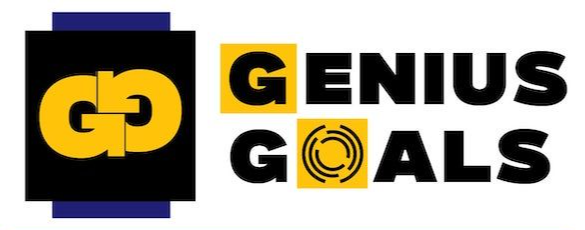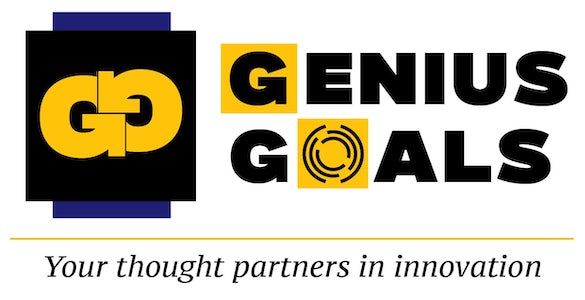I awoke this morning thinking about problem solving. It’s a master skill that lives under the surface of everything we do and is core to producing our results, yet I rarely hear people talk about how they are striving to actively develop it. Not the how, the process you use to solve problems - you can find endless resources about that. I’m talking about the inside game, the levers you pull inside yourself to up your game and see the world differently so that you can solve your greatest challenges.
As I’m writing this, I’m having an ah-ha moment as I connect the dots inside of me about my lifelong fascination with problem solving. When I was a young mother raising my kids, my gut told me that the most important thing I could teach them was how to solve problems. Yes, they need to know the three R’s, but ultimately, the quality of their life would prove out in their core ability to solve problems wisely. With that well-honed tool in their toolbelt, they would be able to navigate any situation to a positive outcome.
The second dot lit up around my work as an executive coach. Much of what I do is to help leaders expand their perspective so they can see what they haven't been aware of before. In that expansion reside the keys to their challenges. And one more dot landed related to the academic research I’m doing with conscious business leaders. In essence, I’m studying how they react to and solve problems. Academics (and some leadership development circles) have a name for this type of inner game - action logic.
Simply put, action logic describes the combination of things you do inside yourself to determine what action to take and when. Action logics expand along a spectrum. The quality of your action logic is determined by a number of factors that, together, determine whether you produce - at one end of the spectrum - proactive, innovative solutions that keep you on an upward trajectory, or - on the other end - reactive, mundane actions that flatten your growth and rarely solve situations.
Action logic is the inside game. Recognizing your action logic requires a slow-motion replay approach at first. You have to go back to the moment when you realized you had a problem to solve, then go into super-slow-motion replay to witness your thinking and your internal state. Just like watching game tape in sports, you replay your own internal moves to figure out what actually happened in the “little black box” inside.
So what are you watching for? I’ve provided a list of the top six interconnected aspects that impact the quality of your action logic. This isn’t a comprehensive list of every action logic aspect, just the six easiest to recognize and shift with some attention and regular practices. Whether you realize it or not, you activate – intentionally or unconsciously - all these aspects before you take any action.
Lever 1: Your Emotional State Your inner state is the first game changer. Are you feeling resourceful and excited about the opportunities the problem presents? Then you’re ready to get started. Or, are you in a fear and anxiety storm about how the problem will unfold? Raging at injustice or betrayal that you think caused it? Feeling guilty that you didn’t see this problem coming? Or maybe sad that the problem is happening at all? These types of negative internal states cloud your ability to be present and resourceful in the moment. Each one is a signal that you’re reacting to past experiences that you deemed negative. When you’re in a negative state, your problem solving is skewed and tainted by the energy of your emotional baggage.
Your first step is to recognize whether your emotional state will prevent you from coming up with a solution that truly solves the problem. If your state is less than resourceful, it would be better to take a break or seek another person’s insights instead of trying to power through on your own.
Lever 2: Perspectives You’re TakingThere are multiple levels and degrees of perspective taking. Successful leaders have expanded their ability to take perspectives and their capacity to hold them as a comprehensive whole. Most people, however, are stuck in first person perspective.
First person perspective (1P) is you looking through your own eyes at the problem. In 1P, you see it one way (your way) and base your solution on your singular perspective, which is only partial and limited by your subjective view. it may be true, but it's only partial.
The power shift is to move into second person perspective (2P). How do you do that? Imagine taking the perspective of another person in the situation, meaning you do a switch and pretend you are looking through their eyes at the problem. You put their hat on and examine the problem the way they might see it, and perhaps even take a look at yourself through their eyes while you’re at it. You’ll notice new insights coming to mind. Jot them down.
If you’re already in 2P, good for you! The next power shift is to move into third person perspective (3P). Imagine there’s a balcony above you and to your left. Imagine you’re standing on the balcony now and looking down at the problem from above. What do you notice as you see yourself, the other person/people, and the environment that you are all within as it relates to the problem? You’ll begin to notice greater dynamics at play. You'll want to consider these as you come up with an innovative solution that generates real results.
It can sometimes take practice to make the 1P to 2P to 3P shift, and to be able to hold it long enough to bring out the new insights. That's normal. Keep practicing and you'll find that it becomes easier. Soon, perspective taking becomes second nature when you're reaching for solutions.
Lever 3: Your Ability to See Interrelationships in the Moment and Across Time
Seeing interrelationships between things is based in systems thinking. It’s being able to recognize all the components of the situation and how the energy and information is moving between them, the processes that are occurring, and the mechanisms that trigger those processes. Some people have this capability naturally as their way of seeing. For everyone else, it takes a deliberate effort to see more.
First-level systems thinking begins with seeing the interrelationships in the current moment. (It sometimes unlocks when you get to 3P seeing.) As you further develop this ability, you begin to expand your systems view across time, meaning you become better at playing out the processes and mechanisms to better predict short term and long term outcomes.
Lever 4: Your Assumptions
Your assumptions are powerful enablers or inhibitors of your problem-solving skills. Think of assumptions as your underlying belief about yourself, other people, the world, and possibility. In the famous words of Henry Ford, “Whether you think you can or you think you can’t, you’re right.”
A key lever here is to build a personal practice to help you question your assumptions. It can be as easy as regularly asking yourself, “What am I assuming about this problem?”, "What am I assuming about myself?," or “What am I taking for granted in this situation?” You can also ask these questions in relation to what you’re assuming about other people in the situation, the very questions you're asking (or not), or anything that is associated with the problem. Assumptions are best tested with others, where you can support each other to expand your thinking about a situation.
Lever 5: What Information You Gather How conscious are you of the type of information you gather to help you determine what’s happening? (Notice that in that question that I’m assuming that you do gather information and don’t just jump to conclusions.)
How much variety is there in your information gathering? For example, are you a data-driven person who focuses primarily on the numbers? Are you a people-focused person who relies more on what others think and how they’re feeling? Do you jump online and search the web for objective information? Do you check in with yourself to articulate what your gut says, what your lived experiences have taught you? Where are your information gaps? If you lean too far toward one type of information over the others, you are likely missing key pieces of the puzzle. Look for ways to create a more thorough approach that gives you a clearer, more comprehensive picture.
Lever 6: How You Interpret the Information Your interpretations are the way you see things based on your past experiences, your values, and the meaning you made of those experiences. Have you ever met someone who got a job promotion and wasn't happy about it? Or another who was thrilled? And another who was "meh" about it. People can interpret a job promotion in any variety of ways. One person might say it means they’re doing a good job and their boss likes them. Another might interpret it as proof that their boss hates them and is just making a political move to get them out of a project. And yet another might see it as meaningless because it didn’t result in enough of a salary increase.
Interpretations are our best-guess subjective assessments. Interpretations are impacted by your emotional state and your awareness of —or lack of— the dynamics happening in the situation and across time. The power move here is to build a personal practice where you ask yourself “what else.” What else could this mean? What else might be at work here? What else might he/she/they have meant?
Questioning our interpretations requires a mindset of humility. They’re always based on partial information. You never know everything; therefore you are always assuming something and relying on your past experiences to make sense of the current reality. As you practice this aspect, you'll begin to notice that you use your interpretation to justify the beliefs and assumptions you hold. Letting go of those justifications is a conscious action on the path to expanding your action logic.
You may notice at this point the interconnectedness between these six aspects of action logic. None of them stand alone. Together they contribute to the quality of your action logic and ability to produce innovative, timely solutions.
The hallmark of purpose-driven business is innovative problem solving. As entrepreneurs, we use proactive innovation to solve problems that prevent people from having fulfilling lives in some way. These key levers are tools of a conscious business leader who is deliberately developing and nurturing expanded degrees of action logic to hone themselves as agents of personal, social, and planetary transformation.




